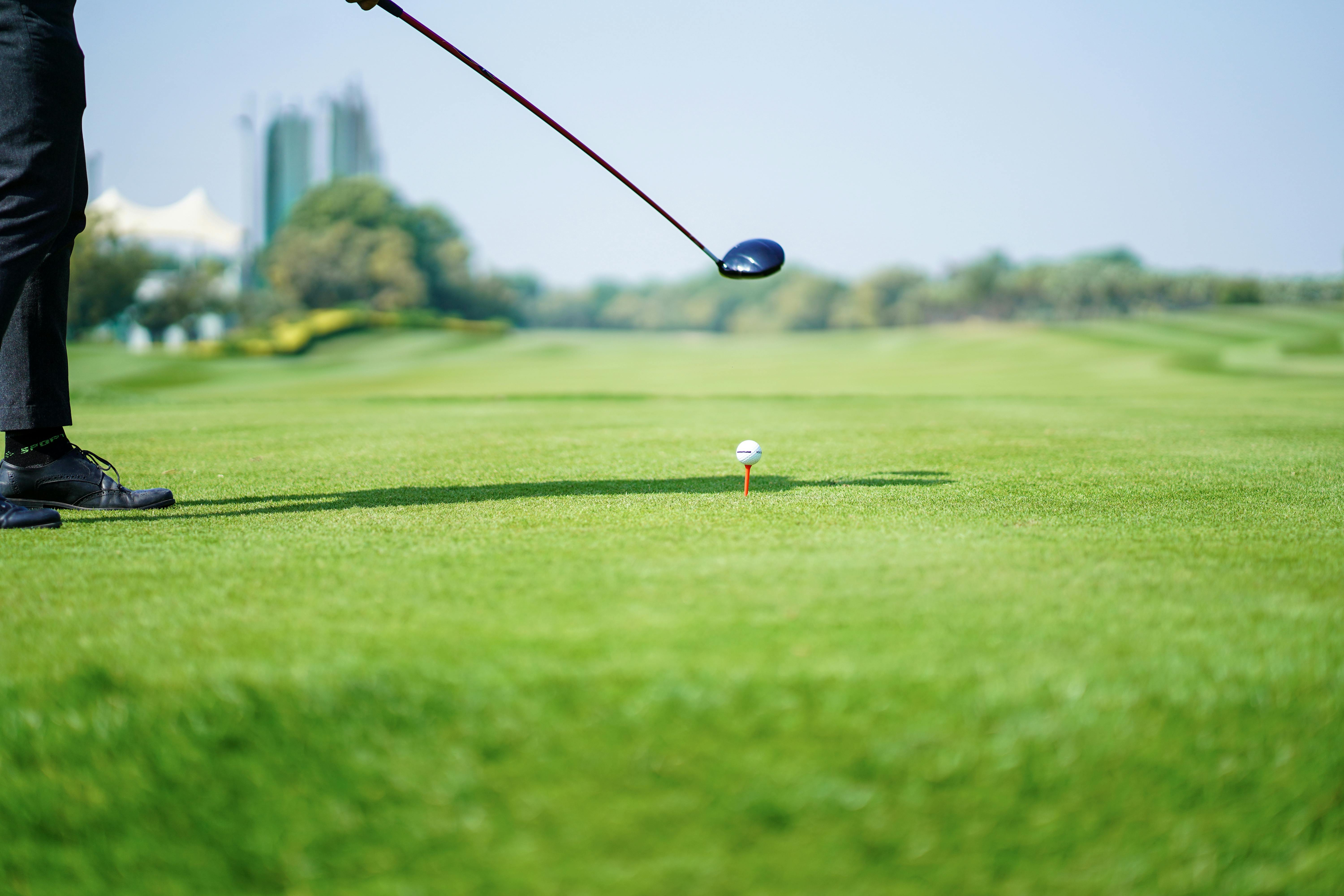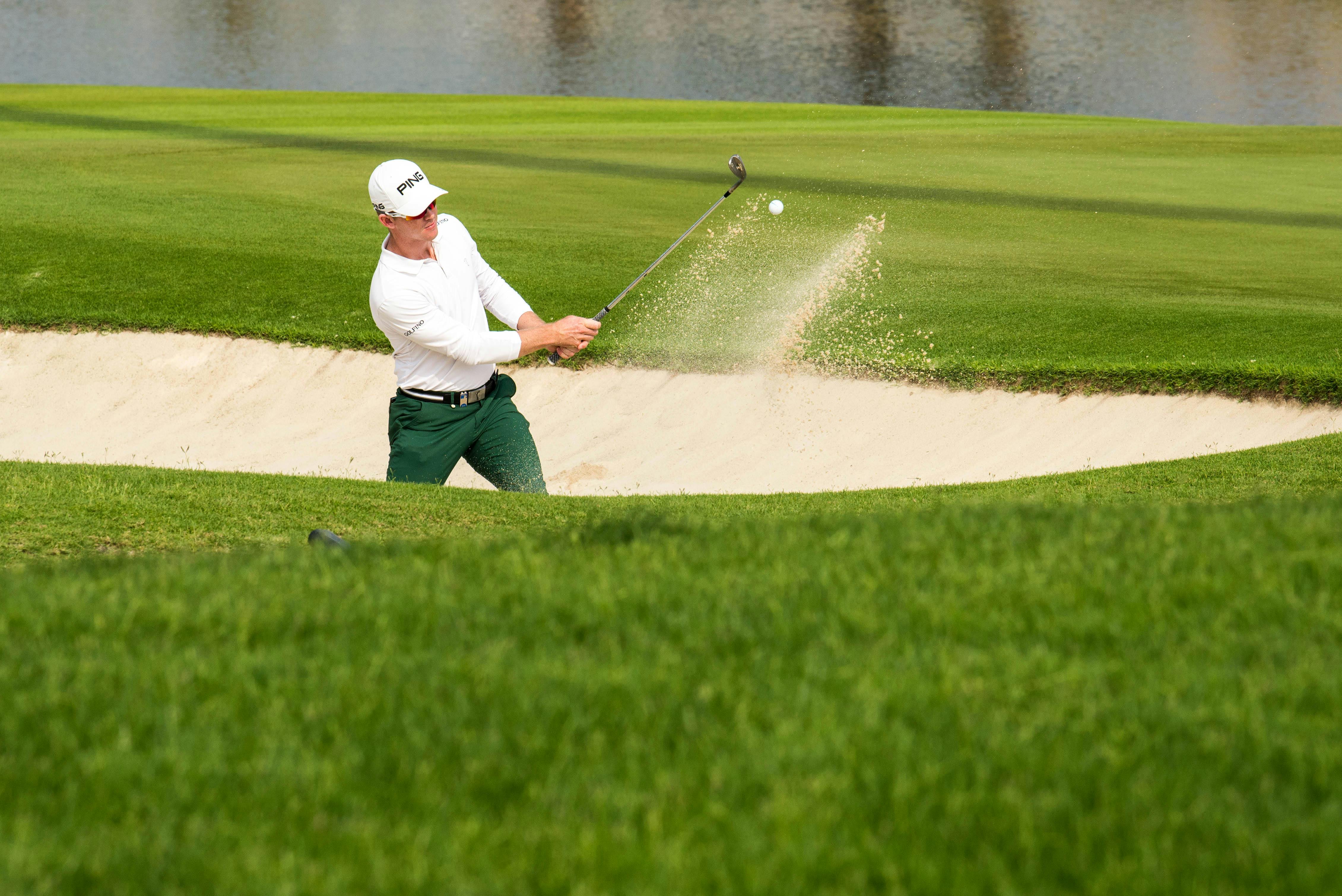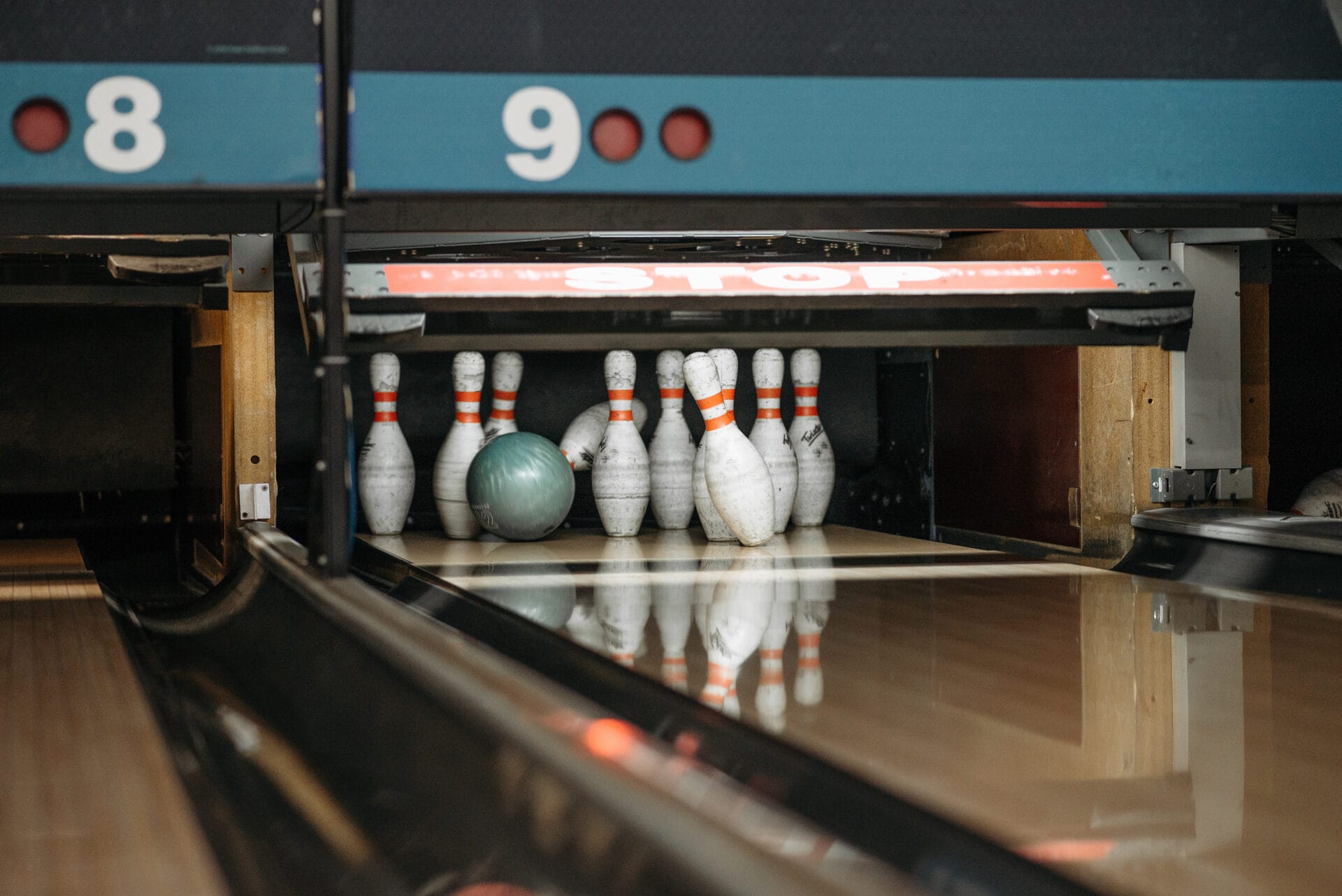Hitting a golf ball straight can be a difficult task, but with the right technique and practice, you can improve your golf game. In this article, we will discuss the fundamentals of hitting a golf ball straight and the important tips to keep in mind while you are on the golf course. With these tips and practice, you can improve your accuracy and hit the ball farther and straighter.To hit a golf ball straight, start by gripping the club with your dominant hand at the top and your other hand lower down. Position the ball in the middle of your stance, with your feet shoulder-width apart. Keep your head down throughout the swing and try to maintain a steady tempo. As you swing back, rotate your hips and shoulders so that your left arm creates an angle of 90 degrees with the club shaft. On the downswing, shift your weight onto your front foot and accelerate through impact. Finally, follow through with a full finish to ensure maximum power and accuracy.
Understanding the Basics of Hitting a Golf Ball Straight
Hitting a golf ball straight is one of the most important skills to have when playing golf. It requires a great deal of practice and knowledge to achieve. Understanding the basics of hitting a golf ball straight is the first step in becoming a successful golfer. The following are some tips on how to hit a golf ball straight.
The first tip for hitting a golf ball straight is to set up correctly. This means having your feet and shoulders parallel to the target line, and your clubface square to the target line at address. Make sure that you keep your head still and your weight evenly distributed throughout your body.
The second tip is to maintain good posture throughout the swing. Keep your back straight, shoulders relaxed, and head still while swinging. This will help you stay on balance throughout your swing and prevent you from swaying or over-swinging during your downswing.
The third tip is to use proper grip pressure when gripping the club handle. You should hold the grip lightly yet firmly enough so that it does not slip out of your hands during the swing. Also, make sure that you keep both hands connected throughout the swing by keeping pressure on both hands equally through impact.
The fourth tip is to focus on making an inside-out path with your swing plane, which will help you hit a draw shot or push fade shot instead of slicing or hooking it off-line. To do this, focus on making an inside-out path with your left arm (for right-handers) as you swing through impact and creating an angle between your left arm and club shaft at impact for greater accuracy.
Finally, understand that hitting a golf ball straight requires practice and repetition in order for it to become consistent over time. Be patient with yourself as you work on developing this skill, and don’t be discouraged if you don’t see immediate results from following these tips. With time and dedication, you can start hitting straighter shots more consistently!
The Importance of Good Posture in Hitting Golf Ball Straight
Having good posture when hitting a golf ball is essential to ensuring that you hit the ball straight. Proper posture will allow you to place your body in a better position to create the desired swing path and hit the ball with more power and accuracy. It is important that your body is properly aligned so that you can generate maximum torque and clubhead speed, while also reducing the risk of injury.
Good posture starts with your feet being shoulder-width apart, with your weight evenly distributed on both feet and slightly more on your back foot. You should bend slightly from the waist, making sure that your spine is in a straight line and not curved. Your arms should hang naturally in front of you, with your elbows bent slightly. Your hands should also be relaxed, but not too loose.
It is also important to ensure that your head remains still throughout the swing. Keeping your head steady will help you maintain good balance and prevent any unnecessary movement during the swing which can cause an inaccurate shot or even injury. Your arms and hands should move freely as they move through the swing, allowing for maximum clubhead speed at impact.
Finally, it is important to make sure that you keep good rhythm during the swing. This means maintaining a consistent tempo throughout the entire swing and not rushing any part of it. Keeping a steady rhythm will ensure that you are able to generate maximum power while also maintaining accuracy at impact.
In conclusion, having good posture when hitting a golf ball is essential for hitting it straight and accurately. It is important to maintain proper alignment during the swing so that you can generate maximum torque and clubhead speed while also minimizing the risk of injury. Additionally, keeping good rhythm during the swing will help maintain accuracy at impact while maximizing power output as well.
Practice Your Grip for Hitting a Golf Ball Straight
Having the right grip when playing golf is essential to hitting a straight shot. A good grip ensures that the clubface is square to the target at impact and that you hit the ball in the intended direction. Practicing your grip is one of the best ways to make sure you swing with consistency and accuracy.
Start by taking your stance and gripping the club, making sure that your palms are facing each other. Your hands should be slightly turned inward so that your thumbs are pointing down towards the ground. Your left thumb should be along the top of the grip, while your right thumb should rest just beneath it.
Your left hand should have a firm grip on the club, but leave some room for movement in your wrist. This will give you more control over your shots without sacrificing power. With your right hand, take a gentle hold on the club and make sure that both hands remain connected throughout the swing. You want to keep them connected so that they move as one unit during your swing.
Once you have established your grip, practice making swings with it until it feels comfortable and natural. Make sure that you’re keeping your arms close to your body as you swing and that there’s no tension in either hand or arm during impact with the ball. If anything feels off or uncomfortable during practice swings, then adjust your grip accordingly until it feels just right.
Practicing this same grip consistently will help you develop muscle memory which will ensure better control over each shot you take on the course. It may seem tedious at first, but with enough practice, this simple exercise can help improve accuracy and consistency in all of your golf shots!
Aligning Your Body to Hit a Golf Ball Straight
Hitting a golf ball straight requires the correct body alignment. Aligning your body correctly will help ensure that the golf ball is hit in the right direction and with the desired power. Here are some tips to help you align your body before hitting a golf ball:
1. Start by standing at address, with your feet shoulder-width apart. This will help you maintain balance and control throughout your swing.
2. Make sure that your hips are square to the target line. This will give you an effective platform from which to hit the ball.
3. Next, turn your shoulders so that they are also square to the target line. This will ensure that you can generate maximum power from your swing.
4. Lastly, align your head so that it is directly over the golf ball at address. This will help keep your eyes focused on the target line during the swing.
By following these simple steps, you should be able to properly align your body for a straight shot off of any tee box or fairway. Remember, it is important to practice good body alignment in order to consistently hit straight shots and lower your score on the course!

Master the Swing Plane for Consistent Shots
The swing plane is a term used to describe the path of the golf club during a golf swing. Mastering the swing plane is essential for consistent shots and improved accuracy. It can be difficult to master, but with practice and an understanding of the fundamentals, it can be done.
To begin, it’s important to understand that the swing plane is affected by several factors, including body position, grip, stance, and clubhead speed. By developing an understanding of these elements and how they affect your swing plane, you’ll be able to make adjustments as needed in order to maintain your ideal plane throughout your entire swing.
One key factor in mastering the swing plane is having a proper grip. The way you hold your club can have a major impact on your ability to maintain a consistent path through your downswing and follow through. If your grip is too tight or too loose, it will likely cause you to lose control of the club head and result in inconsistent shots.
Another important factor in maintaining a consistent swing plane is having good posture. Your posture should remain consistent throughout your entire swing, from address through follow-through. Keeping your spine angle steady will help you stay on track with the path of your club head as you move through each phase of the golf swing.
Finally, make sure that you have adequate clubhead speed throughout your entire swing. Too much speed can cause you to lose control of the club head during your downswing and follow-through; however, too little speed can cause you to miss out on potential power and distance for each shot. Finding that sweet spot between speed and control will help keep you on track with a consistent swing plane.
By making sure that all these elements are working together correctly—grip, posture, speed—you’ll be able to master the art of maintaining an effective and consistent swing plane for improved accuracy with each shot. With practice and patience you’ll eventually get there!
Improving Your Timing and Tempo to Hit a Golf Ball Straight
Having good timing and tempo when swinging a golf club can greatly improve your accuracy and power. Good timing ensures that you are able to hit the ball at the optimum moment, while having good tempo will help you maintain a consistent swing throughout your round. Here are some tips to help you improve your timing and tempo when hitting a golf ball:
1. Start with a slow practice swing. Before making contact with the ball, practice making slow, steady swings without worrying about speed or accuracy. This will help you get a feel for the clubhead’s path through the air, as well as its timing relative to your body’s motion.
2. Take a deep breath before swinging. Taking a deep breath helps to relax your muscles and clear your mind, allowing you to focus on the swing rather than worrying about other things in life.
3. Count “one-two-three” as you swing back and through the ball. Counting aloud helps keep you focused on the task at hand, ensuring that you make consistent swings from one shot to the next.
4. Swing at a constant speed throughout your backswing and downswing. Inconsistent speeds can cause errors in your timing and cause the ball to go off-line or fly too low or too high off of the tee box.
5. Make sure that your wrists cock properly during your backswing and release correctly during your follow-through motion. Cocking and releasing correctly will ensure that all of your clubhead speed is transferred into the ball upon impact, giving you maximum distance off of each shot.
By following these simple tips, you should be able to improve both your timing and tempo when hitting golf balls straight down the fairway!
Visualizing Your Target Line for Hitting a Golf Ball Straight
Hitting a golf ball straight is one of the most important skills in the game of golf. It requires accurate aim and consistent contact with the ball. Visualizing your target line can help you achieve this accuracy and consistency. By visualizing your target line, you can better understand how to hit the ball in the direction you want it to go.
One way to start visualizing your target line is to set up an alignment stick down the target line from your ball to the target. This will help you create a mental image of the path you need to take with your clubhead to hit the ball straight. You should also look for a spot on your target line that is approximately five feet away from where you are standing. This spot should be at least two inches wide and should be easy for you to identify. Once you have identified this spot, focus on it as you swing your club through impact.
Another way to visualize your target line is by creating an imaginary triangle between yourself, the ball, and the target. This will help you align yourself properly at address and ensure that you have proper body alignment throughout your swing. Visualize this triangle in order to create a mental image of how your body should move when hitting the ball straight towards your intended target.
Finally, practice swinging with an exaggerated follow-through motion on each shot. This will help ingrain a smooth transition in which your clubhead follows through along the same path as it did during backswing and impact. Practicing this exaggerated follow-through motion will allow you to get a better feel for what it feels like when hitting shots straight towards your intended target.
By visualizing your target line, setting up alignment sticks, creating imaginary triangles, and practicing exaggerated follow-through motions, you can develop better accuracy and consistency when hitting golf shots straight towards their intended targets. With practice and dedication, these techniques will improve how well you hit shots straight down the fairway!

Conclusion
Hitting a golf ball straight is an important skill to master in order to play the game successfully. It takes practice and patience, but with a few simple tips, you can learn how to hit a golf ball straight in no time. Be sure to practice the proper grip, stance, and swing technique to ensure that you have the best chance of hitting your target. Remember that relaxation and focus are key components in performing your best. With these tips, you can be well on your way to hitting the ball straight every time.
Good luck and happy golfing!




